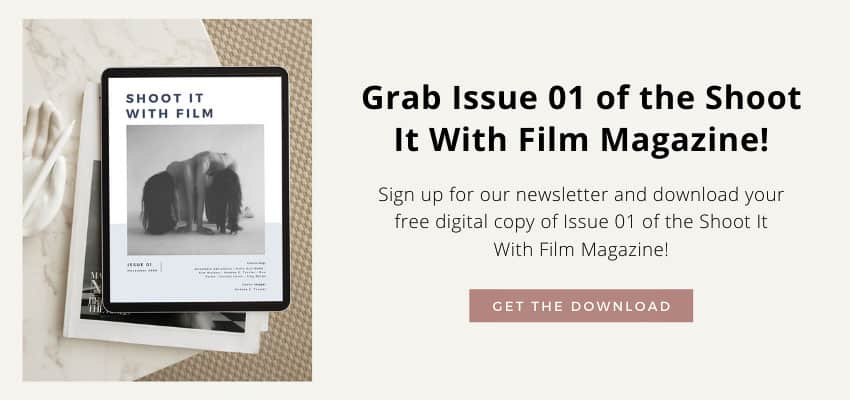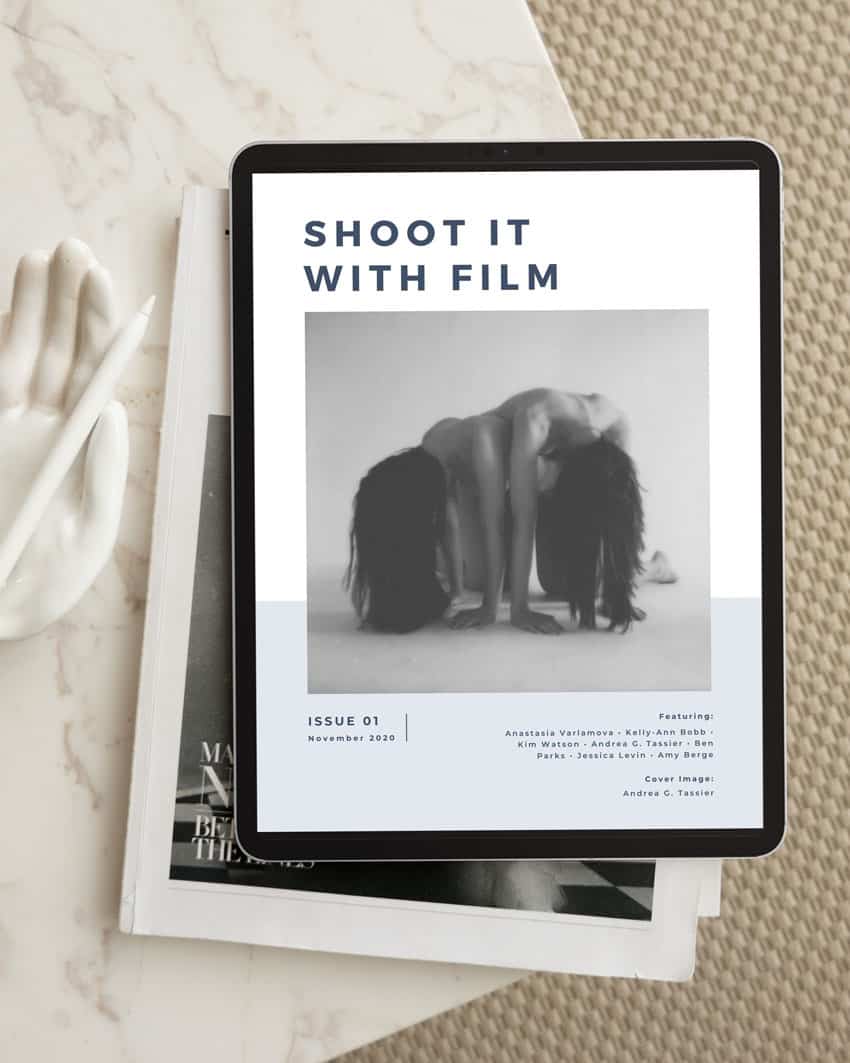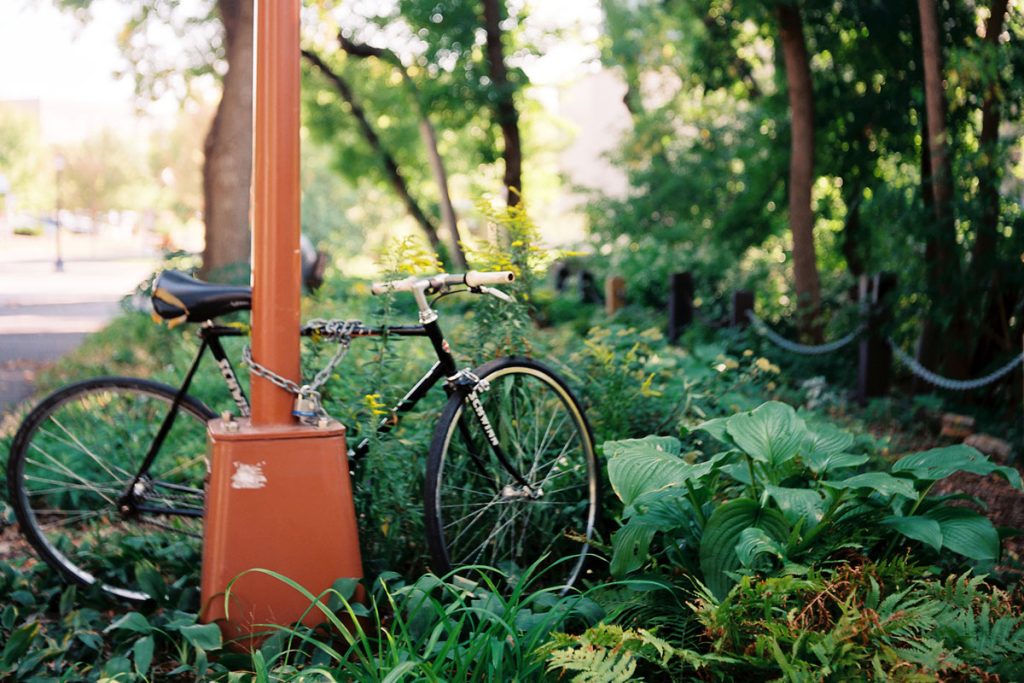
Written by Taylor Blanchard
Have you ever found yourself shooting film in bright sun and wanting to retain details in your shadows? Are you searching to differentiate your style when shooting one of your favorite film stocks? Do you ever find yourself with an older camera that maxes out at 1/500th of a shutter speed, which limits you on a bright, sunny day?
If so, maybe it’s time to take a fresh look at pulling film, which is often overshadowed by pushing film.

ISO, Box Speed, and Rating Your Film
Before we get much further, let’s review the basics. A film’s ISO refers to the sensitivity of the film to light. If you shoot film at the ISO given by the manufacturer, that’s often referred to as “shooting at box speed,” because it’s the speed printed on the box. So, if you shoot a 400 speed film, then you meter for 400 ISO or set 400 ISO for your camera’s internal light meter.
Rating the film typically refers to shooting the film at a speed other than box speed. For example, someone might shoot Ilford HP5+, a 400 ISO film, at 800, so you would say they rated the film at 800 (which is one stop difference, or -1).


What is Pulling Film?
Pulling film is a development process where you develop the film for less time, essentially underexposing the film. To pull film, two things must happen to create a balanced image: you have to rate your film at a lower ISO than box speed when you shoot (overexposing) AND you have to give the negatives less time in development (underexposing).
If you simply rate your film at a lower ISO and develop as normal, then it’s not pulling film. In fact, many people always rate certain light-hungry films (like Kodak Portra 400) at a lower ISO (or they add exposure compensation) and develop normally.
Pulling film balances the in-camera overexposure with the time in chemistry underexposure. When you pull (or push) film, you’re not actually changing the sensitivity of the film; You’re changing the exposure index, or EI, which is another way of saying how you rate the film.
Now that we’ve got that out of the way, you’re probably asking: “Why would I pull film?”


Related: Pushing Film: Film Photography Guide
Benefits of Pulling Film
1. Bring Out Shadow Detail
If you’ve ever pushed film, then you know that pushing film adds contrast and reduces highlight details, making the highlights look brighter. When you pull film, the opposite happens.
Because the negatives are in the development chemistry for less time, then you don’t get as much contrast and deep blacks, but you get details in the shadows and often in the highlights. You also get less noticeable grain and sometimes an overall darker image.
Pulling film is a great option on a bright, sunny day when you want to bring in shadow detail from a specific part of the image. Meter for the image area where you want to see more detail and remember to meter at the pulled film speed (i.e. if pulling a 400 speed film to 100, or 2 stops), then meter for 100).
Because of the reduced grain and shadow detail, when you see the results of pulled film, the image might look flat; however, you can add contrast in the darkroom or in photo editing software.


2. A Unique Look
Pulling film will give you a different look than other photographers shooting the same film. You may find that the aesthetic of pulled film better fits the mood of a scene or evokes a specific feeling in a portrait.
Maybe you’re looking for a darker image that still has detail, or a color photo with very smooth grain and a more desaturated look.
If you have one film stock you love to shoot, try pulling it. Maybe you’ll find a new look for your photography.
If you’re new to shooting film, I recommend first shooting at box speed with different film stocks. Then, review the results and make note of what you like. After you understand how the film responds to your camera and shooting style, then you can make adjustments, such as pushing and pulling.


3. Camera or Lens Limitations
If you have an older camera, such as my Rolleiflex Autotmat, the fastest shutter speed might only be 1/500th. In very bright light with a 400 or 800 speed film, you won’t have many available exposure combinations.
In that case, you may want to pull the film, which will give you a wider range of f/stop and shutter speed combinations.
When you pull film, you can also use wider f/stops on your camera or go for a slower shutter speed – both of which can be difficult in bright light with a fast film.


Make Note When You Pull (or Push) Film
Whether you develop yourself or send to a lab, always note if you push or pull the film.
For 35mm and 120, write on the film paper or canister, or secure a note to the film. With sheet film for large format film photography, many photographers use a system of color dot stickers on their negative holders – one color for pull and another for push.
No matter what method you use, this ensures that the film isn’t developed normally. For example, if I am pulling a film by 2 stops, I’ll write “-2” several times on the film so it stands out. This is very important if you send your film to a lab.
If you develop yourself, you’ll find many guides online, and in Massive Dev, to give you the proper development times when pulling film.
A best practice (and one I don’t always follow, honestly) is to log or journal the different films you shoot and any modifications. Then, if you’ve looking at scans or prints later, you’ll have a record if you rated the film differently than box speed or if you pushed or pulled it.


My Results
I pulled four film stocks: Kodak Tri-X 400, Kodak T-Max 400, Kodak Ektar 100, and Ferrania P30. I pulled each of the stocks by two stops (meaning I overexposed by two stops when shooting, or +2, and then compensated in development by -2).
T-Max and Tri-X gave the most expected results: increased shadow detail and an overall balanced image with plenty to work with for adjustments in software or the darkroom. Both stocks are fantastic to pull!
I picked Ferraina P30 because it’s known for its deep contrast, and honestly, I was surprised that it retained so much contrast when pulled. The frames were also darker overall. I might try this one again for a moody effect or contrast with a bit more shadow detail.
Ektar 100 is a saturated and punchy film stock, so I was curious to see how it would handle being pulled. Pulling Ektar 100 gave me very smooth, almost buttery results – especially in open shade or on cloudy days. It didn’t fare as well in the bright, sunny conditions where Ektar at box speed shines. It retained a lot of Ektar’s saturated color, but a bit more muted. I will definitely pull this stock again.
I’d like to pull other color film stocks after my results with Ektar.




Conclusion
We often find ourselves in low light situations where we want to push film; it’s not as rare that you’re out on a bright, sunny day, and only have 800 speed film. That’s why I’ve come to believe that pulling film has been a bit overlooked. Yet it still has a place in our photographic practice.
Do you like pulling film? Let me know what you think in the comments.


Thank you so much, Taylor! Taylor is a regular contributor here at Shoot It With Film, and you can check out her other articles here, such as RETO Ultra Wide and Slim Review and Guide to Setting Up a Darkroom at Home.
You can also check out more of Taylor’s work on Instagram.
Leave your questions about pulling film below in the comments!








Blog Comments
ed
February 23, 2024 at 10:45 am
Hello. When I push or pull film I still get it developed at a photo lab at the box speed it is. I never had a problem with results that way.
Taylor Blanchard
February 23, 2024 at 11:30 am
Hi Ed – that’s great that you found a process that works for you with results that you like. One nit: if you rate your film at a different speed, and develop at box speed, then that’s not pushing or pulling. You have to rate your film at a different speed and compensate in development for it to be pushed or pulled.
Curtis Heikkinen
February 23, 2024 at 11:32 am
Very helpful comment. I will have to give that a try. Thanks for the input!
Jim
February 23, 2024 at 11:11 am
I shoot most of my films below box speed. I like the increased shadow detail. Seems the tonal range increases. It’s a great look. I don’t look for contrasty scenes,
Taylor Blanchard
February 23, 2024 at 11:36 am
Thank you for the comment, Jim! I generally agree – I prefer to have a wide tonal range and then add contrast with filters in the darkroom (or in image editing software). I’ve also grown to appreciate images that have a softer look.
Curtis Heikkinen
February 23, 2024 at 11:29 am
Great article and very informative. Outstanding images to boot. Thanks for putting that together!
Taylor Blanchard
February 23, 2024 at 11:37 am
I appreciate the comment, Curtis. I’m also happy I was able to “pull” the article together. 😉
Nathan McCreery
February 23, 2024 at 12:05 pm
Interesting. A couple of things. When you “pull” expose film the reason it works is that you add detail to the shadow areas, and in B&W you control highlights by adjusting development. Reality is that most B&W actual working ASA is about 1/2 box speed. The secret is in the processing because you can adjust highlight placement by development. Longer development = higher contrast, shorter development = lowered contrast.
Taylor Blanchard
February 23, 2024 at 1:11 pm
Very interesting Nathan – I didn’t know that about most black and white film having a working ASA about half of box. I appreciate the comment.
Lily
February 25, 2024 at 4:57 am
Thanks for sharing this article! I recently shot a roll on my Rolleiflex with the intention to pull it… only to later discover the film lab wasn’t able to underdevelop my film. Fortunately, the photos still look cool! I’m going to try it again with another lab.
Taylor Blanchard
February 25, 2024 at 10:20 am
Lily – wow, that’s interesting. I’m glad you were still able to get results. My guess is your lab could pull film – they just didn’t want to. Ha! Depending on volume, it might be too much extra work for the lab. One of the things that started me thinking about this article was a post from a well-known lab that said they hadn’t pulled film in months. I really don’t think pulling is that common. Both The FIND Lab and The Darkroom have processed pulled film for me.